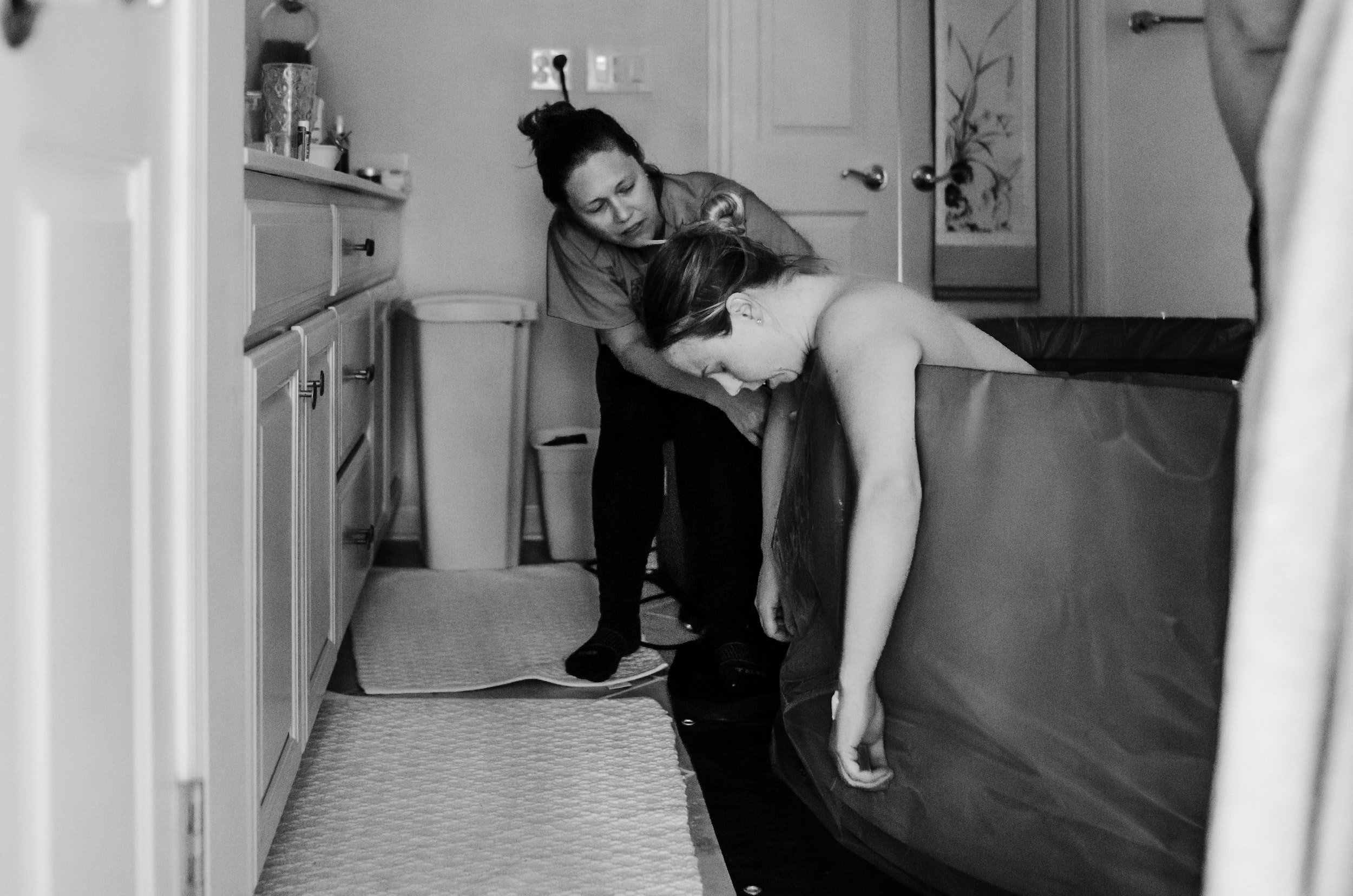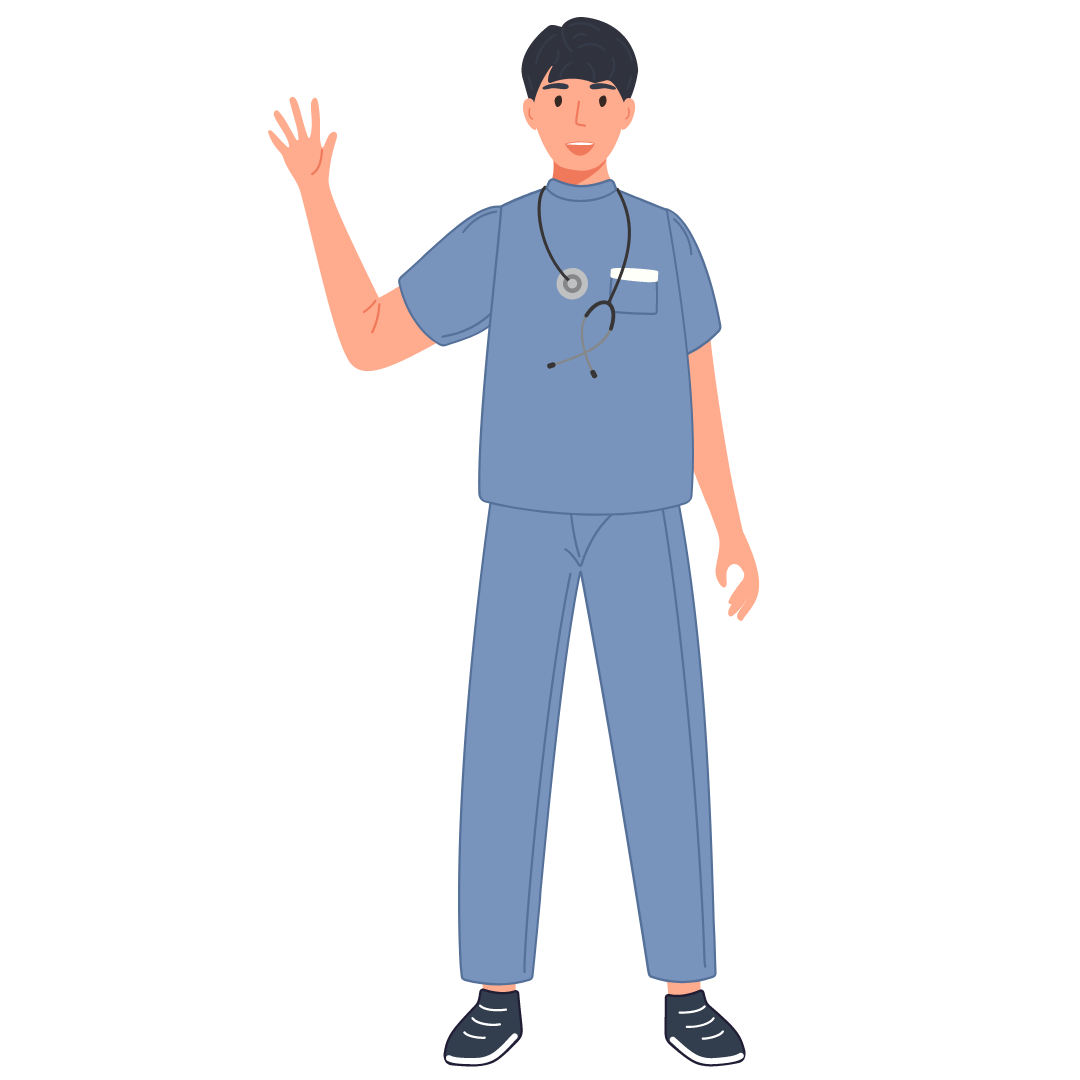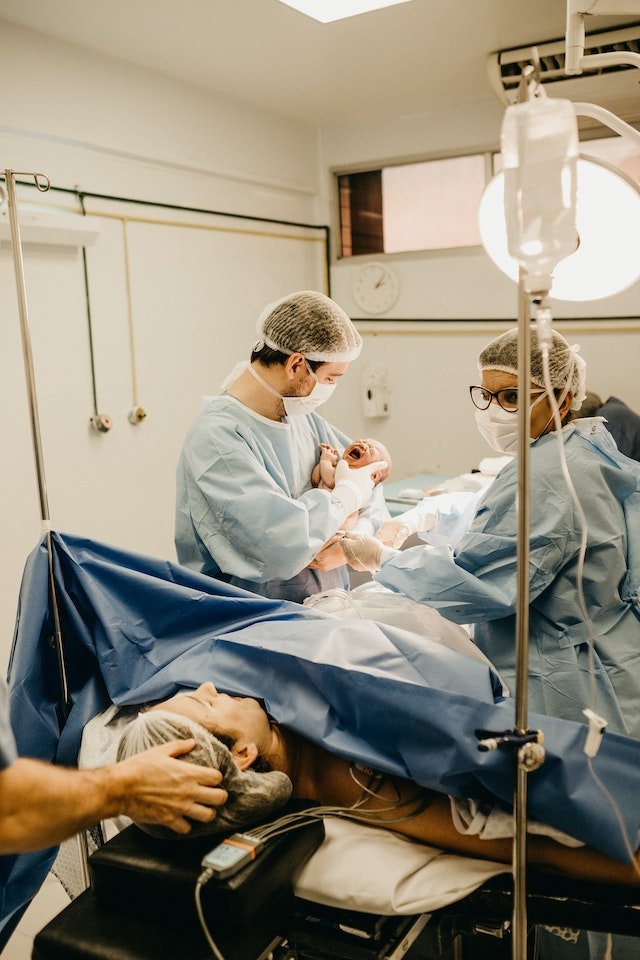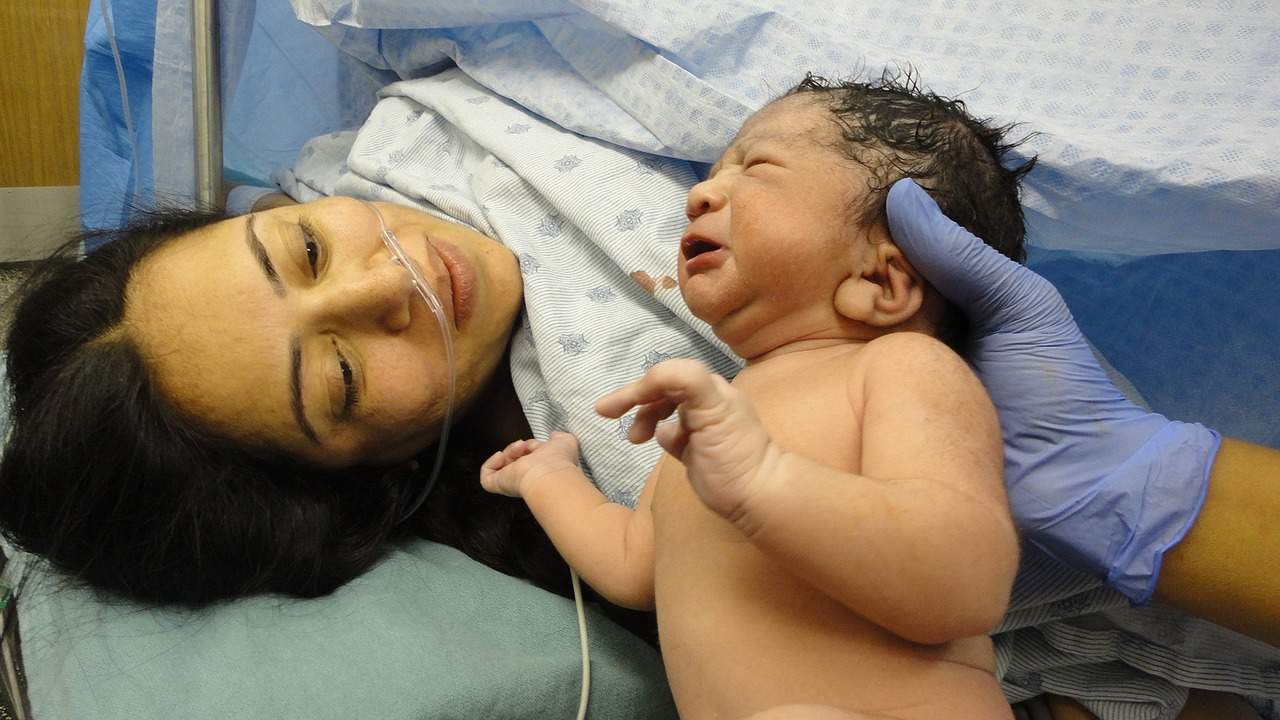

Domino Effect in Labor
Interventions that are not medically indicated can lead to a domino effect. One intervention leads to another and another and….


Could Birth Be Normal? (Dr. Kerry, #2)
Dr. Kerry’s second post describes her nursing experience after leaving a high-tech hospital maternity unit in Southern California. She was amazed at the difference in care when exposed to normal birth practices with the Native Americans in Alaska in an Indian Health Service hospital.

Reality Shock: RN’s First Years (Dr. Kerry, #1)
Vanita’s Preface: There is a well-known phenomena that new nurses and other professionals experience as their idealistic dreams of “helping people” are tempered by their less-than-perfect or possibly even disturbing experiences in the medical system. This transition is referred to as “reality shock”. The RN who wrote this story now is a “Doctor of Science”. She describes some of her ethical dilemmas with the use of interventions and deception in modern maternity care. After her experience at this very high-tech hospital, she continued to naturally assume that most of the routinely used modern gadgetry that women and their babies had been exposed to was helpful or even essential. Here is Kerry’s tale:

CNMs: Quality Care
The vast majority of midwives in the United States (U.S.) are certified nurse-midwives (CNMs) and certified midwives (CMs). CNMs are licensed and have prescriptive authority in every state. CMs are licensed in five states. According to the American Midwifery Certification Board, as of January 2012 there are 12,622 CNMs and 73 CMs in the United States (D. Smith, personal communication, January, 2012), and since 1991, the number of midwife-attended births in the United States has more than doubled.1,2 This growth of midwifery has been supported by published research that demonstrates midwifery care is associated with high-quality and is comparable or in some studies, better outcomes than care provided by obstetrician/gynecologists. Recipients of care by midwives report high levels of patient satisfaction, and midwifery care results in lower costs due to fewer unnecessary, invasive, and expensive interventions.

Decrease Cesareans Resources
There will always be cases where C-sections are medically necessary, but experts agree that doctors perform far too many. Learn more about how to protect yourself and your baby from an Unnec-Cesarean.

State Laws & Resources
This post contains a link to each state’s laws and resources regarding midwifery care.

Women want Midwives: The Atlantic
The Atlantic comments midwives are making a comeback. Midwives can provide prenatal care and assistance during labor and delivery, encouraging easier childbirth in low-risk pregnancies when invasive medical procedures are not needed. Hospital based midwives often avoid attaching a fetal heart rate monitor all the time to a woman. It is known that continuous fetal monitoring can be harmful because women tend to stay in bed and not move as much as women who are not tethered. Midwives are known to be more patient with the process of labor than are many other obstetrical providers and to focus more on communication and educating women. Births attended by a Nurse- Midwife have lower rates of unnecessary episiotomies, which is a surgical incision of the vagina, but they will do one if needed. They also have lower rates of artificially induced labor and have less vaginal lacerations. Midwives help women avoid pain medications by being fully present with them, reassuring, encouraging free movement during labor, supporting them with showering, immersion in warm water tubs, breathing exercises and varied birth positions to name just a few.

Home Birth: 5.2% Cesareans
This extensive and exciting study demonstrates that midwifery care with different types of midwives is an option for healthy women with low-risk pregnancies, including women carrying their first child. Women need to understand the differences in the types of midwives available to them and choose their birth attendants carefully. Home birth is safest when there is good communication between the midwife/birth attendant and the hospital. Unfortunately, It is not uncommon to find financial/political competition between physicians and midwives. EMTALA, the Emergency Medical Treatment & Labor Act, prevents hospitals or staff from refusing to care for someone who arrives at their doors in labor or in an emergency. However, a poor relationship with hospital staff can result in dangerous delays to care.

Harvard Ob for Home Birth
The New England Journal of Medicine interviewed renown American-educated obstetrician Neel Shah. He is an assistant professor at Harvard. Dr. Shah discusses the research findings that in the United Kingdom (U.K.) healthy women with low-risk pregnancies were safer giving birth in birth centers or at home under the care of a midwife than in a hospital under the supervision of an obstetrician.1

Curb those Cesareans: W.H.O.
In 2015, the World Health Organization (WHO) issued a statement about the high global rate of cesarean deliveries.1 Medically necessary C-sections can be exceedingly beneficial for the mother and baby and rates of 10%, but no more than 15% should be the goal.

Mayo Clinic’s Midwives
In the U.S., most births that involve midwives are in hospitals.1 A study in the U.K. has shown that low-risk births with midwives are safer than low-risk births by obstetricians in hospitals. British obstetricians in the U.K. frequently perform cesarean delivery, forceps delivery, and anesthesia injected into the spinal canal that could have been avoided. At the acclaimed Mayo Clinic in Rochester, Minnesota, midwives manage low-risk births without an obstetrician present. Studies have shown that Nurse-Midwives do as well as or better than obstetricians in low-risk cases. Nurse-Midwives handle many common complications such as cords around the baby’s neck, delivering baby’s with big shoulders, suturing tears and excessive bleeding. But if the case becomes very medically complicated, an obstetrician is called.

Harvard: Midwife Solution
Harvard Magazine states that an estimated 85% of pregnant women reach full term without complications in the U.S. which is an oft quoted statistic. This article is a thoughtful exploration of the “unnec-cesarean” issue and includes interviews with Certified Nurse-Midwives (CNMs) on how midwives are part of the solution.

Consider Avoiding: Consumer Reports
The Consumer Reports article entitled, “What to Reject When You Are Expecting”, acknowledges that “medical expediency often takes priority over the best outcomes and evidence-based treatments”. The U.S. birth assembly line is often influenced by convenience even when it is ethically questionable. Nine procedures are listed to be cautious about because they can interfere with the primal process of birth. Consumer Reports thinks this “expediency” is one reason our birth statistics are so bad in our country and maternal and mortality rates are worse than many other developed nations. They also acknowledge that birth in the U.S. has become a birth machine that can interfere with the primal process of birth.

Choose Hospital Carefully: Consumer Reports
The hospital in which you choose to have your baby has a greater impact on your chances of having a C-section, than do your age, your weight, and whether you have diabetes. How busy a hospital is and the location of the hospital can raise your risk of a C-section dramatically. By now you are probably aware that more than half of all C-sections performed in the U.S. are not necessary.

Question Ob Procedures: Consumer Reports
Expectant mothers and their families commonly do not understand the risks to themselves and their babies from routine interventions. Even the electronic fetal monitor that healthy women are often continuously attached to in labor leads to many unneeded surgical deliveries. Too many women are agreeing to have an induced labor, epidurals, episiotomy (vaginal incision), and cesarean sections according to a Childbirth Connection survey, discussed in Consumer Reports News.1 All procedures have their proper place but surprisingly many invasive procedures are performed without being appropriate for the situation. One intervention leads to the next which we call the “cascade of interventions” and leads often to more complications and “unnec-cesareans”.

Avoid “Unnec-Cesareans” & Enjoy Your Birth
Make informed healthcare decisions that are right for you, use pregnancy and labor for conscious personal growth and empowerment, and prepare holistically for labor.

Real Reasons for Unnec-cesareans
It all begins with an idea.Many forces come together to create this current crisis of preventable and needless cesareans. But the most important, is that our culture, and thereby medical system, continues to be a patriarchal (male-dominated thought) system. Any doubt about this? Consider the rampant rates of abuse that women and vulnerable children suffer every day or the 2017 outrageous proposal by the Trump administration to eliminate pregnancy coverage from The Affordable Care Act (Obamacare). Can you imagine a president advising this when the U.S.’s worsening infant and maternal mortality rates are an international disgrace? What messages do events such as these send to women and children about their value? Gratefully, the mistreatment of women and children is coming out of the closet and perpetrators are being held accountable. Labor units are not immune to this insidious mistreatment of women and children though it is often interpreted as essential “medical help” by the public and the professionals themselves.

Real Risks of Cesareans
A C-section is major abdominal surgery that requires anesthesia. A six-inch incision is cut through the skin, fascia (fibrous tissue surrounding muscles and other organs), abdominal lining, and the thick uterine muscle. The abdominal six-pack muscles need to be separated surgically. There are many risks and potential dangers for mom and baby from the surgery and anesthesia.
